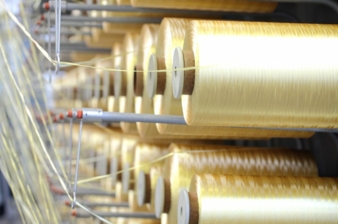01/10/2019 – A new generation of polyimide fibers — auf Deutsch lesen
New high-tech fibers from Evonik
The new product, brand named P84 HT, is distinguished by improved mechanical stability and flexibility at continuously high operating temperatures.
High-tech fibers with maximum filtration efficiency
With their unique multilobal cross-section and the largest surface area available in the market, these high-tech fibers from Evonik offer the best filtration efficiency. Due to their excellent chemical and physical properties, P84 HT high-performance fibers can be used in a wide variety of applications. These range from filter media for high-temperature filtration, through protective clothing and sealing materials for space vehicles, to various high-temperature applications such as thermal insulation.
Another competitive differentiating factor of P84 HT consists in the improved textile properties at high temperatures. The new polyimide fiber from Evonik retains its flexibility better than other materials, even at temperatures around 280 °C. As a result, it remains more stable in applications with relatively high average temperatures and frequent temperature spikes. A standardized bending test shows that the new P84 HT fiber has almost twice the flexibility of standard materials.
P84 – the ultimate solution in hot gas filtration
In hot gas filtration applications, for example, the innovative P84® HT filter media retain significantly higher permeability over their entire life cycle. Depending on the field of application, this could reduce emission of fine dust, waste gases and sensibly reduce the total cost of ownership of the plant.
Evonik is the leading global producer of chemically resistant, thermally stable, and non-flammable polyimide fibers. These are produced at its chemical production sites in Lenzing, and Schörfling am Attersee, Austria.




